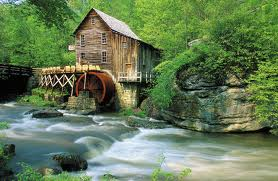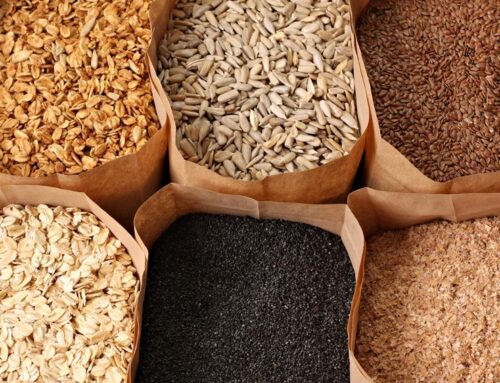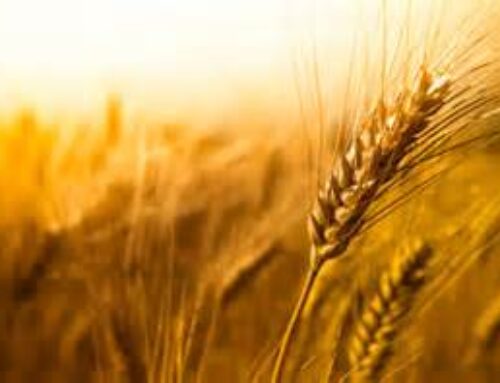For thousands of years bread has been referred to as “the staff of life”. At least 10 books in the Bible contain references to bread, and others also contain references to leavening, flour, and kneading of flour.
Very early in history it must have been discovered that a more edible product could be made by separating the ground meal into coarse bran particles and white flour. The advent of weaving made this process possible. Sieves or baskets were made using horse hair or papyrus. Later, Ancient Romans ground and sifted the flour through linen, twice. This was an expensive procedure that only the aristocracy could afford. The whiter flour obtained was called “pollen” meaning a fine powder. The very best grade they called “flos” a word for a flower, being the best part of a plant. So our words “flour” and “flower” originally were the same.
It was only after leavening agents and yeasts were perfected that bread took on the round or “loaf” shape instead of the flat types produced from much denser grains of earlier times. Flat breads were a staple of diets around the world for some 5,000 years. By 170 B.C., bread baking had become a profession in Rome. It is thought that the Romans were the first to have started a milling industry using animals or teams of slaves to drive the wheels to grind the wheat. Before this, grinding of meal had mostly been carried out in the home using a device called a hand-quern. The hand-quern consisted of two round flat stones, one above the other. The upper stone was turned by a wooden handle, wheat was trickled in through a hole in the center, and meal came out around the edge.
During the time of King James I, bread for the poor was made from barley, Ireland commonly ate potato bread, and bread made from modern yeast (rather than a sourdough process) is credited to English bakers in 1634. The first American gristmill (which is a mill for grinding grain, especially the customer’s own grain) was built in Jamestown in 1621. Prior to that, the Native Americans ground corn by hand usually with a mortar and pestle, as did the very early settlers. In 1631 a gristmill was built in Watertown, Massachusetts, and in 1633 gristmills were built in both Dorchester and Boston. Wheat did not grow well in New England, so they relied more on corn and rye for bread. By mid-century New York had become active in wheat milling with Philadelphia, Willmington, Baltimore, and Richmond to follow. In 1752 George Washington built a gristmill at Mount Vernon and soon built two more, after which he was considered the most successful miller of the time.
Bread baking was time consuming and most bakers made enough bread to last at least a week at a time. It is estimated that by the end of the 19th century 95% of the bread consumed in America was still being made in the home kitchen. Through much of history, a person’s social station could be discerned by the color of bread they consumed. The darker the bread, the lower the social station. This was because whiter flours were more expensive and harder for millers to adulterate with other products. Due to the ease and affordability of large-scale processing we have seen a reversal of this trend. Darker breads are more expensive and highly prized for their taste as well as their nutritional value.
~Tracy Bartosik
Bibliography:
“Victoria’s Home Companion or Whole Art of Cooking”, by Victoria R. Rumble
www.bakeinfo.co.nz
www.breadinfo.com




